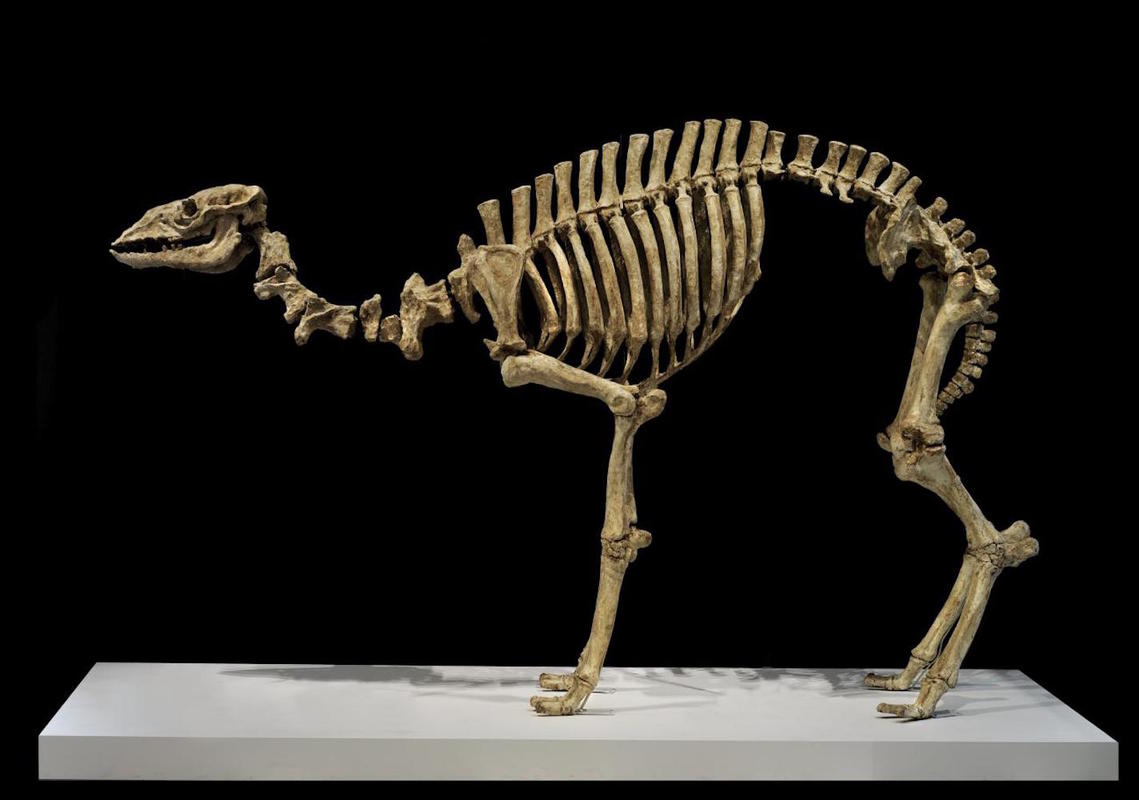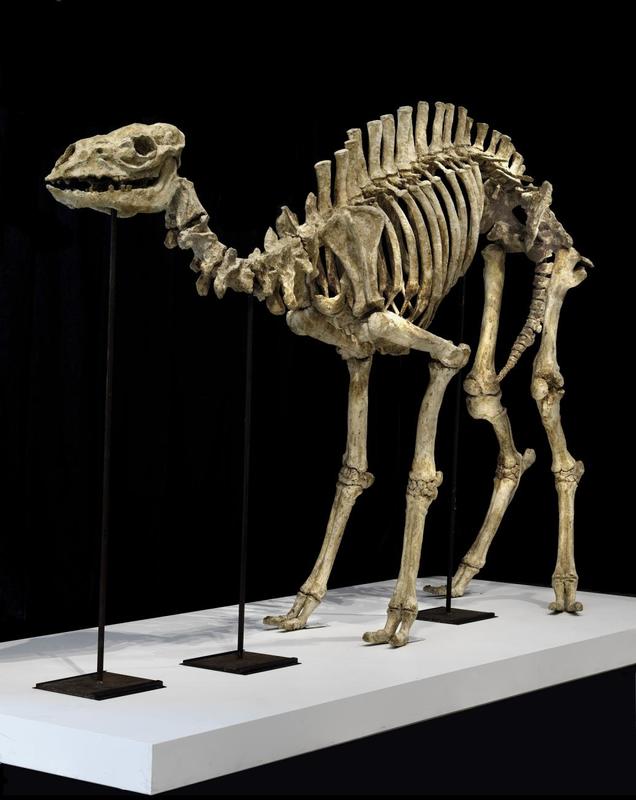More about Pleistocene Skeleton

Contributor
Pleistocene Skeleton is a piece that Nancy Graves excavated from her mind and not actually a real skeleton.
Nancy Graves was first popular during the 60s and 70s but her work is a complete outlier for that time. It was so eclectic that during exhibitions people hardly believed that all of her work was by the same person much less part of an artistic movement. Graves blatantly ignored all of the social issues of the time and remained focused on her true loves: natural history, art, and camels. This piece is where all of her loves meet. And even though the love child of her true loves isn’t the cutest sculpture in the gallery, we still have to give Graves props for knowing exactly what she wanted.
This sculpture, though made of steel, wax, marble dust, and acrylic, is remarkably convincing as an actual camel skeleton. It’s about the right size at seven feet tall, ten feet long, and three feet wide, aka just big enough to make you feel insignificant. If you didn’t read the museum label (like most museum runners) there is a considerable chance that you would assume that it is a real honest to goodness skeleton, like the work of that contemporary nutcase, Damien Hirst. But it’s not. Graves loved camels too much to harm them in any of her art. Around the time that Graves created this work, she traveled to North Africa to study the animals. She created a film, Izy Boukir, made up completely of shots of camels just going about their camel business. This experience informed her sculpture during this time and particularly made her interested in the camel’s morphology, which is an scientific area of study dedicated to finding out why some animals look so incredibly weird and alien-like. This study was obviously incredibly pertinent to the camel, as it’s perhaps one of the weirdest looking animals to ever walk the planet.
Sources
- Guiducci, Mark. "It’s Time To Rediscover Nancy Graves: Post-Minimalist, Anti-Pop Lover Of Camels." Vogue. N.p., 2015. Web. 28 Mar. 2018.
- "IZY BOUKIR, 1970." Nancy Graves Foundation. Web. 28 Mar. 2018.
- McGuigan, Cathleen. "FORMS OF FANTASY." Nytimes.com. N.p., 1987. Web. 30 Mar. 2018.
- "Pleistocene Skeleton." Smithsonian American Art Museum. Web. 30 Mar. 2018.












